
Dacia Sandero Review 2023

Introduction
Dacia isn’t a brand that tends to bring the word “quality” to mind, but that’s a very harsh assessment of a manufacturer that’s more than capable of holding its own nowadays.
It wouldn't be unreasonable to suggest that prejudice plays a part in Eastern European brands. Indeed, it's understandable, given the quality of such cars used to fall far short of our higher British expectations. That, though, was in the 1970s, 80s and early 90s – a time when former Czechoslovakian Skodas were the butt of most people’s car jokes.
But, like Skoda, Dacia has been steadily climbing the mountain.
And, while Skoda is aiming at the premium end of the market now, Dacia nevertheless deserves to place its flag at the summit alongside the likes of Vauxhall and Renault.
In fact, Renault owns Dacia nowadays – so the plucky Sandero shares much of its underpinnings with the latest Clio. Indeed, it’s previously been badged as the Renault Sandero in parts of the Middle East and Latin America.
As a result, the expectations have gone up – and the initial signs are positive.
Granted, we’re not expecting BMW levels of luxury here. But if this motor can tick enough boxes at a reasonable price, it has a great chance of being competitive.
So, how many boxes does it tick?
Well, it ticks the box on price, coming in much cheaper than most of its supermini rivals – but does a more affordable price mean a cheap feel?
That was certainly the case with the old Sandero, which, although it had a lot going in its favour, was guilty of some corner-cutting. But the latest model, which launched in 2020, was given a facelift two years later, and these days, it's better than ever.
So, does it still feel cheap? That’s what we’re going to find out.
Select's rating score* - 4.1 / 5
At a Glance
If you squint, you can undoubtedly tell the likeness between the Sandero and the Clio, but the Dacia has its own personality.
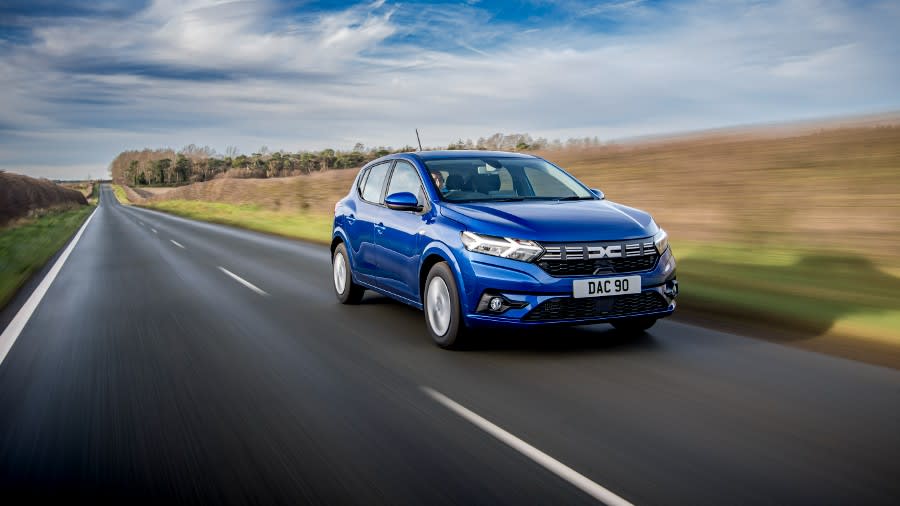
The front end was the focus of a substantial facelift programme, which has done away with the relatively mundane looks.
At the front, the edges of the grille fit perfectly against the headlights, while Dacia’s revised logo, called the ‘Dacia Link’, sits in the middle, with a couple of columns of horizontal lines sitting on either side.
The bodywork is shaped into an athletic-looking arc above the lower grille, positioned in the middle of two black plastic surrounds, which house the foglights.
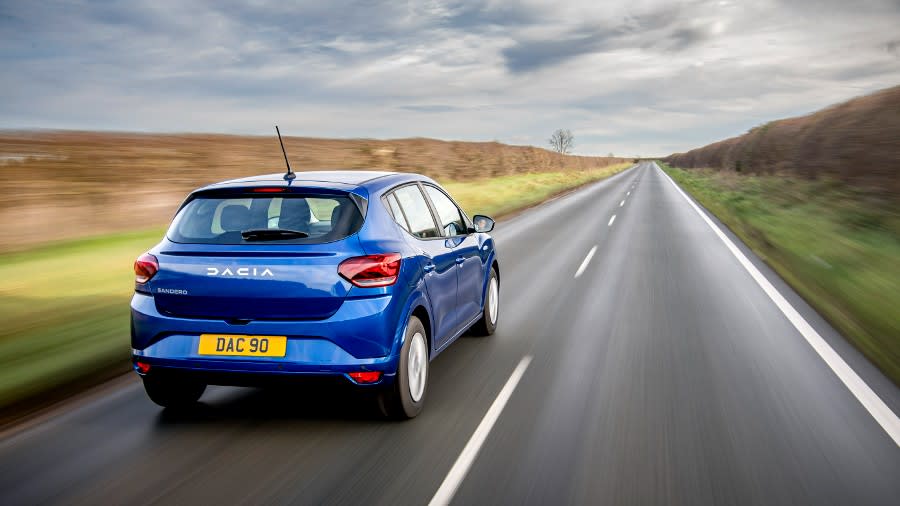
The Sandero doesn’t look quite as strong from the sides, though a shapely indentation of the doors at least adds some character, along with well-defined wheel arches.
Around the back, the rear bodywork is relatively flat, although the higher-trimmed model features a modest spoiler effect beneath the rear window.
It looks reasonably impressive – admittedly nothing spectacular, but it has a decent amount of personality that's roughly on par with many family hatchbacks.
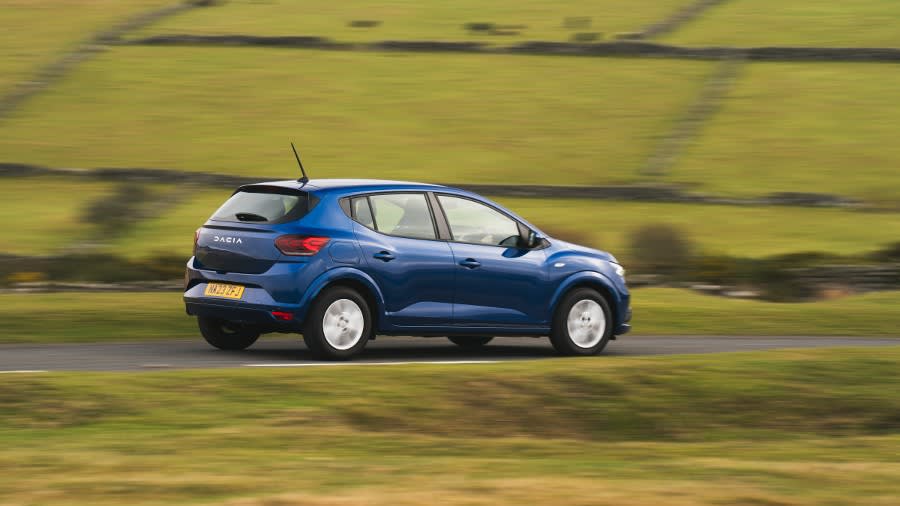
Key Features
Simplicity is vital for Dacia, so the Sandero is available in two trim levels.
Entry-level Essential is basic but still gets 15-inch steel wheels, an information screen (not touchscreen) with DAB radio and Bluetooth. It also has electric front windows, air conditioning, LED headlamps, tinted rear windows and body-coloured bumpers, plus cruise control.
The higher trim, Expression, adds an eight-inch touchscreen with Apple CarPlay and Android Auto, buttons on the steering wheel, electric rear windows, rear parking sensors, a rear-view camera, keyless entry and automatic headlights and wipers.
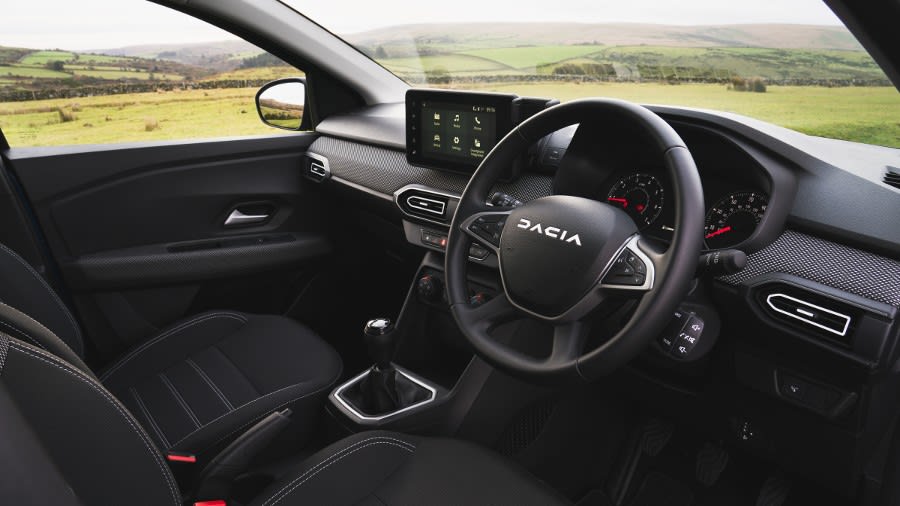
Okay, so there are no alloy wheels, not even as an optional extra, but to be honest, you'll be hard-pushed to notice when you see the hub caps.
In terms of engines, there are a couple to choose from.
The TCe 90 is a turbocharged 1.0-litre three-cylinder petrol with 90PS.
Alternatively, Dacia is one of few manufacturers to offer a bi-fuel version that runs on petrol and LPG as standard, offered as the TCe 100. It’s the same engine with slightly more power at (unsurprisingly, given the name) 100PS. We’re testing the former – the TCe 90 – in top-of-the-range Expression trim.
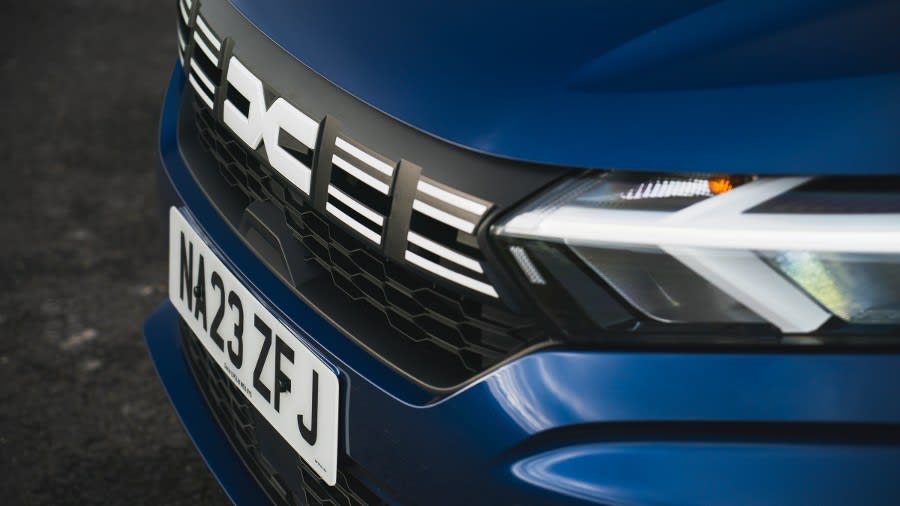
Performance & Drive
In this day and age, 90PS may not sound like a lot – and it isn’t. Nevertheless, the Dacia Sandero still has plenty of poke thanks to its relatively light weight, managing 0-62mph in 11.7-seconds. The manual transmission helps you stir up enough clout to get you up to 111mph.
Okay, neither are imposing figures, and it’s slower than its main rivals – but not that much slower when you factor in the price. It feels faster than the time suggests, and this isn't a car likely to be driven from 0-62mph all that often. As a vehicle to drive around town, on the school run and in stop-start traffic at rush hour, the power on tap is perfectly adequate.
That ‘simple is best’ philosophy makes it all the more surprising that the convenience of an automatic gearbox has been withdrawn from sale, but at least that helps to keep the price down.
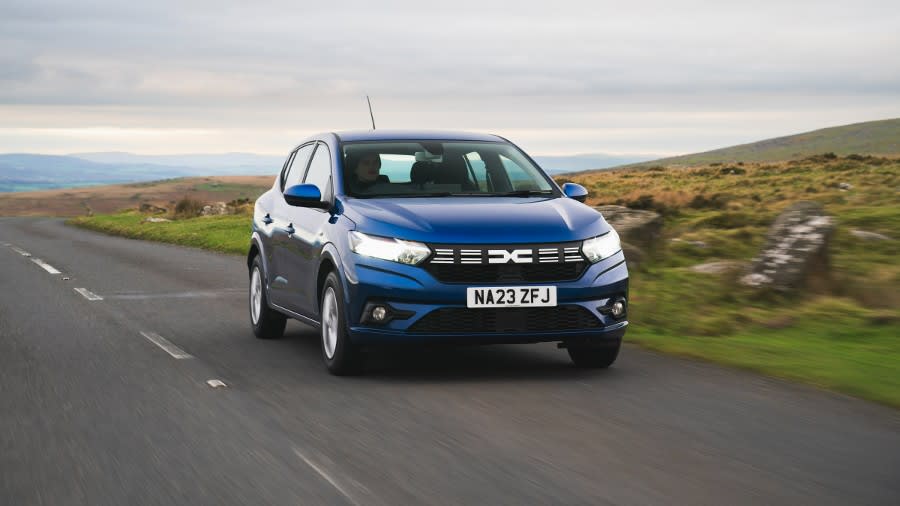
Regarding ride comfort, it won't surprise you to learn that the Dacia Sandero is geared towards a softer setup and does well to smooth out the jolts created by the many potholes on the United Kingdom’s roads.
It isn't class-leading, but, again, taking it in context with the car's price, it outperforms many of its rivals. The softer suspension means that the Sandero won't give you lots of thrills on a country backroad, and you will encounter a bit of body roll in the bends, but the handling isn’t bad.
There is a reasonably decent weight to the steering as you turn into a bend at speed, and the car generally grips the road well, only encountering understeer when you've exceeded its limits. The Ford Fiesta (sadly recently discontinued) has generally been the go-to supermini for handling enthusiasts.
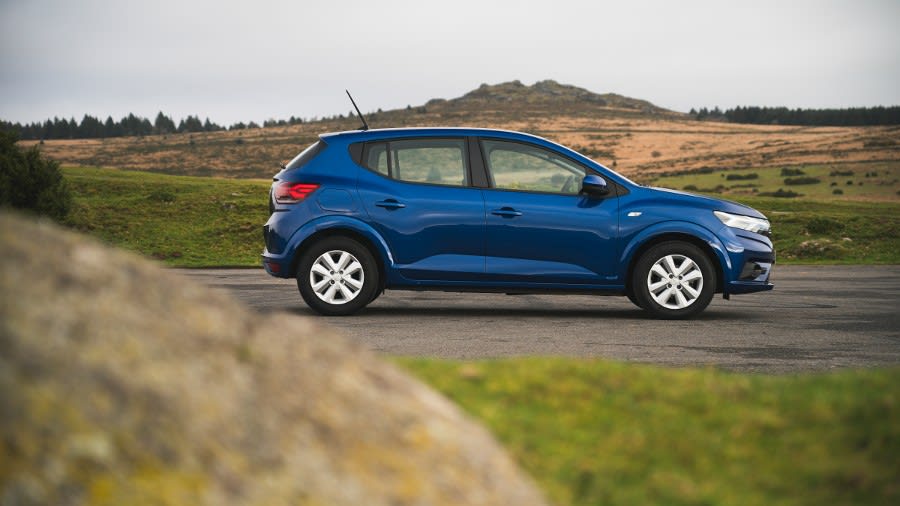
The Dacia Sandero’s cabin is well soundproofed, too, but although the engines are refined for what they are, they can get screechy if you work them hard.
Overall, if you don't mind getting used to filling up with LPG, we recommend the TCe 100 over the TCe 90 to benefit from the savings in running costs and extra power.
That said, the TCe 90 is still more than capable, so it's undoubtedly a good choice.
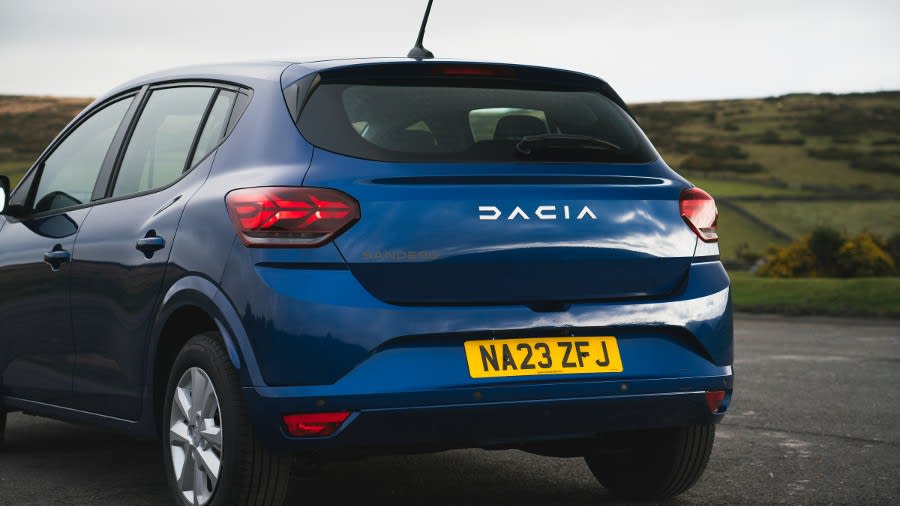
Running Costs & Emissions
The TCe 90 returns a respectable 53.3mpg, emitting 119g/km of CO2.
The bi-fuel TCe 100 is slightly inferior when running on petrol, managing 52.3mpg and producing 123g/km of CO2.
However, the fuel economy drops to 42.2mpg when using LPG (though the CO2 emissions come down to 109g/km).
While it may seem strange that we’ve recommended an engine with inferior fuel economy, LPG is around half the cost of petrol and diesel – though it's essential to ensure that there's a petrol station near you that sells it.
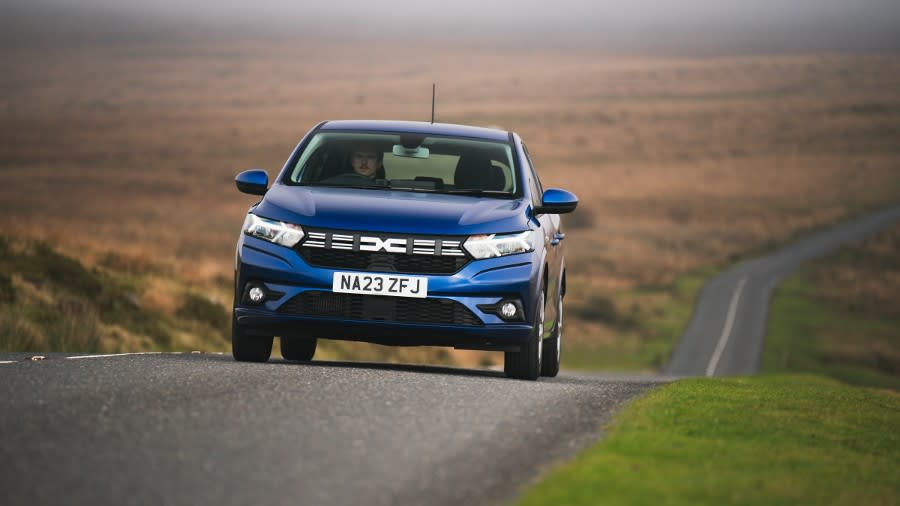
If you run out of LPG, the car will run on petrol alone just fine.
It would be best if you generally had some petrol in the tank to start the engine before it switches over to LPG, though.
While the Sandero is not an obvious choice as a company car, the low leasing price will mean you'll still be saving plenty of money versus most of its rivals. That’s even though it's not a plug-in hybrid, which, along with electric cars, attract the lowest Benefit in Kind tax percentages.
Dacia has a reasonably good reliability record nowadays, too - although you might be interested to know only a standard three-year, 60,000-mile warranty is included. But that warranty won’t impact you, seeing as you’ll be leasing the Sandero.
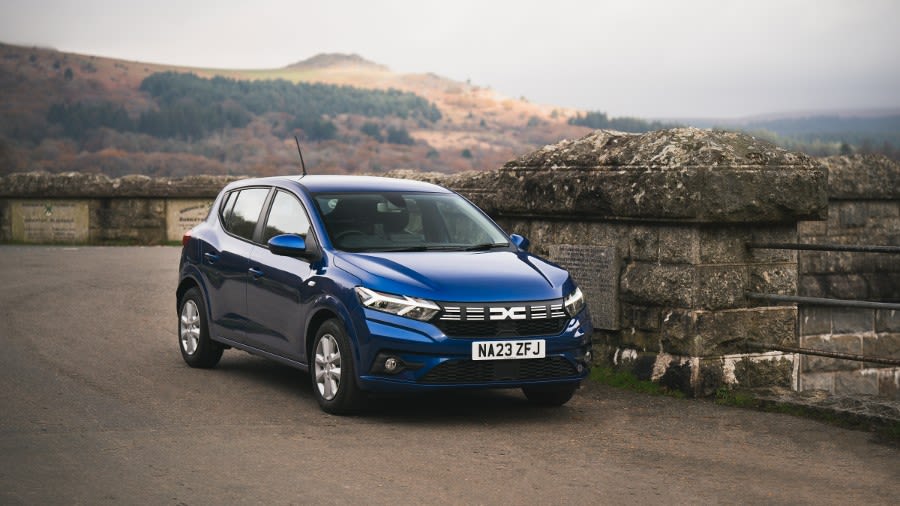
Interior & Technology
The Dacia Sandero’s interior is, on the whole, quite lovely to look at.
Granted, it's nothing special. But the woven pattern on the dashboard and door handles adds a modern touch, and the silver trim in places, notably around the centre of the steering wheel and air vents, helps brighten things up.
The gear lever and the air conditioning dials look a little dated, and some of the plastics could have come from 20 years ago, but maybe we're being a tad unfair. After all, as we’ve said several times in this review, this has to be seen in context.
Yes, this is a cheap car to lease, but the interior does a reasonably good job of not looking cheap.
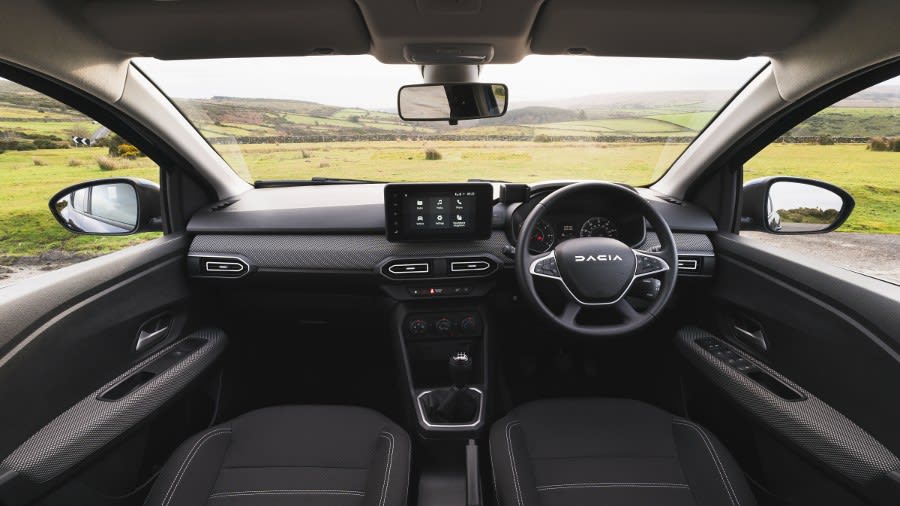
Given most people's expectations will be low, the Sandero's cabin exceeds them, even though you can see the cost-savings in places.
The entry-level model has a DAB radio, and the infotainment system is pleasant despite no touchscreen.
If you want that, then you'll have to fork out extra for the Expression trim, which then enables you to use Apple CarPlay and Android Auto.
It's not the most detailed system in the world, but it more than met our (admittedly modest) expectations, with a clear, crisp display and an intuitive menu layout, while the touchscreen was pleasingly responsive.
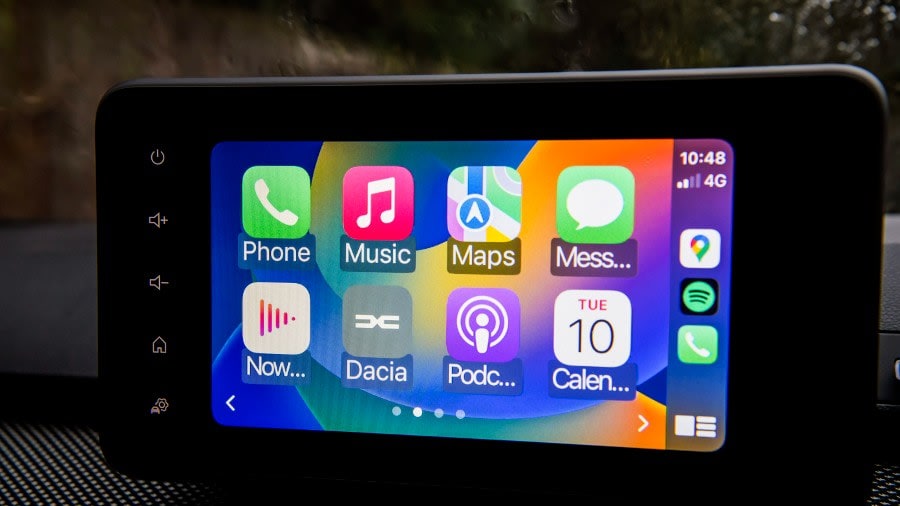
Space & Practicality
If you opt for the entry-level Essential trim, make sure you sit in one first, as height adjustment for the driver's seat (along with an armrest) is only included on the Expression trim.
As we’re testing the latter, that makes it easier to find a comfortable driving position.
Visibility out of the front is reasonably good. But the pillars at the rear are a lot chunkier, so we’re pleased to have the rear parking sensors and rear-view camera in the Expression model.
Night vision is impressive, too, thanks to the automatic LED headlamps, which, as we said earlier, are even included at entry level.
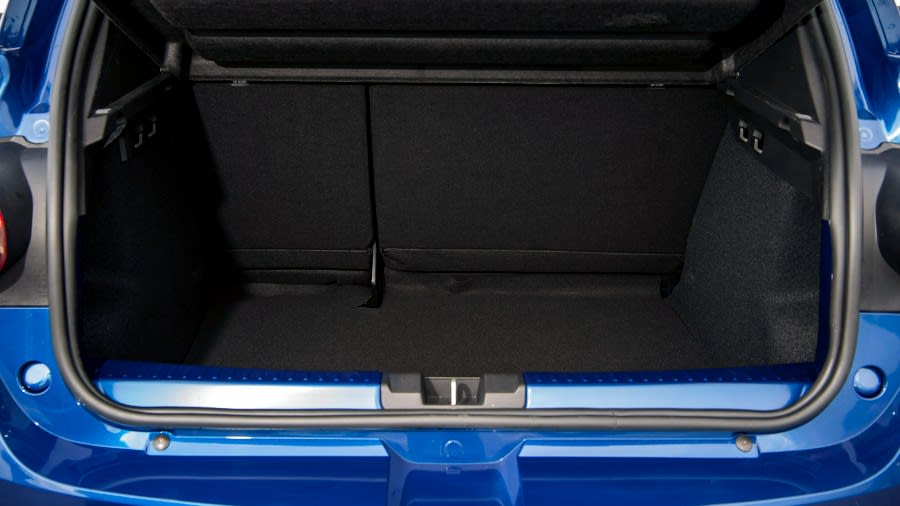
The legroom in the front is more remarkable than we expected, and the headroom isn't bad either, though very tall drivers will be grateful for the Expression trim's height adjustment on the seat.
The rear space is generous by supermini standards, and only lofty passengers will be struggling for legroom, while headroom is fine.
Fitting three fully-grown adults in the back will be tight in any car in this class. But the Sandero is one of the best in terms of the amount of shoulder space, so it’s just about doable, though don’t expect long journeys to be fun if you do.
Put it this way: it doesn’t mimic the classic circus trick of ‘ten clowns struggling to get out of a car the size of a shoebox’ anywhere near as much as you’d think.
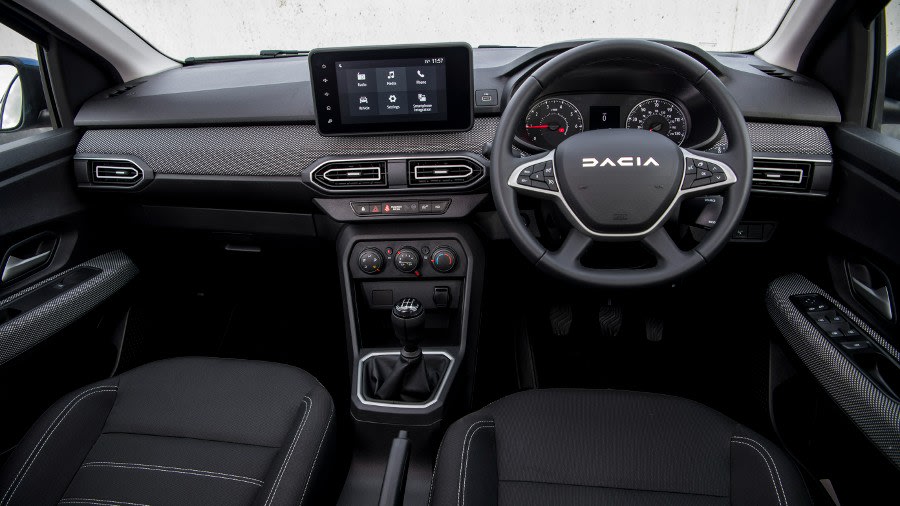
Storage space inside is reasonably good, too, with a couple of cupholders available, a generously sized glovebox and decent-sized door bins in the front. However, the ones in the rear are a little small.
The available boot space is 328 litres, which expands to 1,108 litres with the rear seats down.
The back seats only fold in a 60:40 split rather than the more convenient 40:20:40, but this is hardly a surprise and is commonplace for this class.
One downside is that there's a sizeable boot lip, while the boot floor isn't height adjustable, which might make lifting heavy, more oversized items in and out tricky.
Nevertheless, it's a roomy cargo area for such a small car.
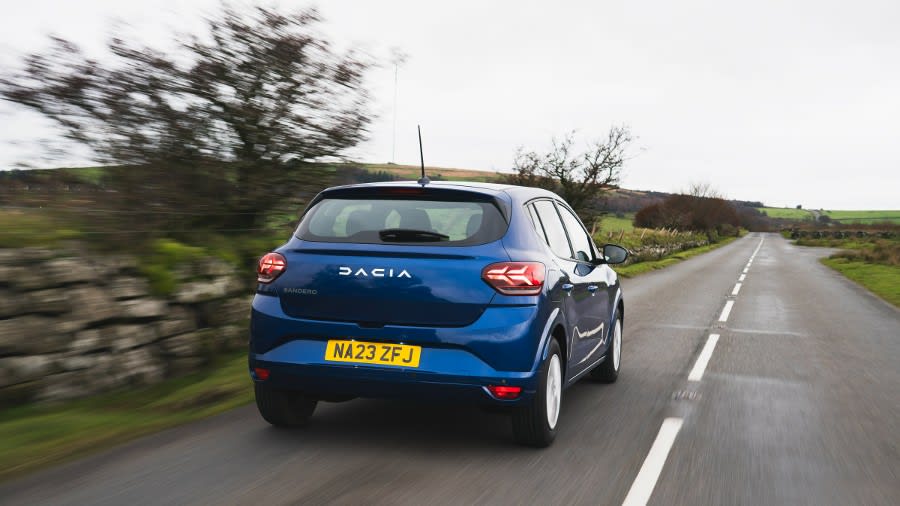
Safety
Euro NCAP last tested the Sandero supermini in 2013, when it achieved a four-star rating, but this has expired, and the testing criteria have become much stricter since then.
This was reflected in the score of the SUV-inspired Sandero Stepway, which is the closest comparison we have for now, earning just a two-star rating in 2021.
It scored 70% for adult occupants, 72% for children and only 42% for safety assists.
Indeed, the same year saw two other Dacias – the Jogger and the Spring – awarded just one star, with the latter only scoring 49% for adults.
Only one car has ever scored a lower grade in recent years, which was the Zoe from Dacia’s parent company, Renault, which alarmingly scored zero stars in 2021.
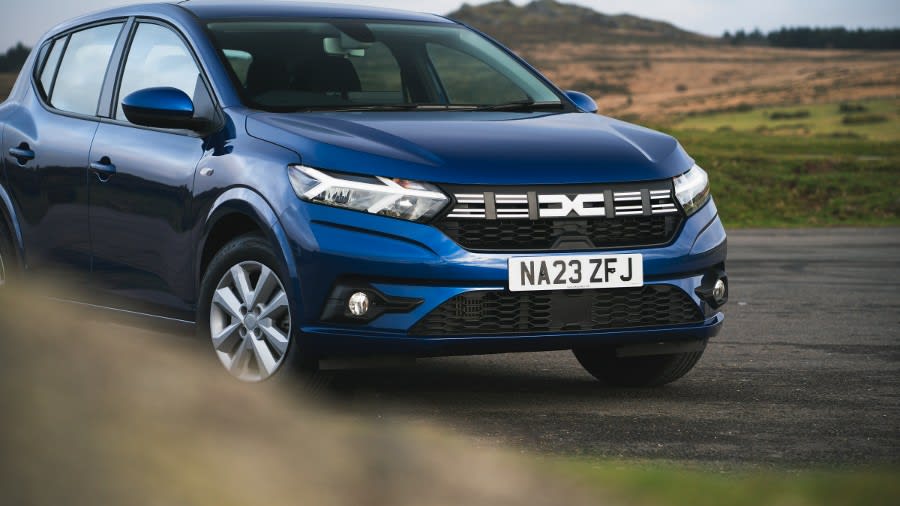
In an era where most manufacturers are comfortably earning five stars, and nearly all the rest get four, safety has long been a weak link for Dacia – and one the manufacturer could address.
Nevertheless, again, it's essential to look at the rating in context. It isn't unsafe – it wouldn't be allowed on the road if it was – and the United Kingdom has some of the most stringent vehicle safety regulations.
What the rating means is simply that it’s not as safe as many other cars out there, but it’s frustratingly been the long-standing Achilles heel of nearly all Dacias.
Six airbags and advanced emergency braking system are included on the Sandero as standard, along with hill-start assist, traction control, Isofix child seat points in the rear outer seats and tyre-pressure monitoring.
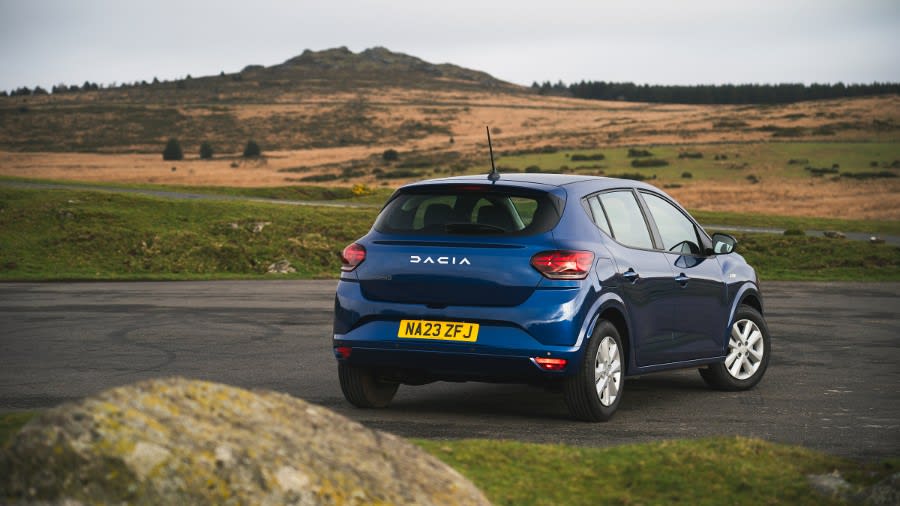
Options
There aren’t many options on the Dacia Sandero.
The default body colour is glacier white, whereas iron blue (which is dark blue), moonstone (light) grey, urban (dark) grey and pearl black cost several hundred pounds extra.
There are no options available to upgrade the wheels. So you can only have alloys if you're willing to opt for them as aftermarket extras, in which case you'd need to declare them as modifications to your insurer.
A spare wheel can be fitted underneath the boot. At the same time, accessories include a safety kit with a first aid kit, a roof spoiler, roof rails and decorative black stickers for the front and back to add an extra dimension of personality to the exterior.
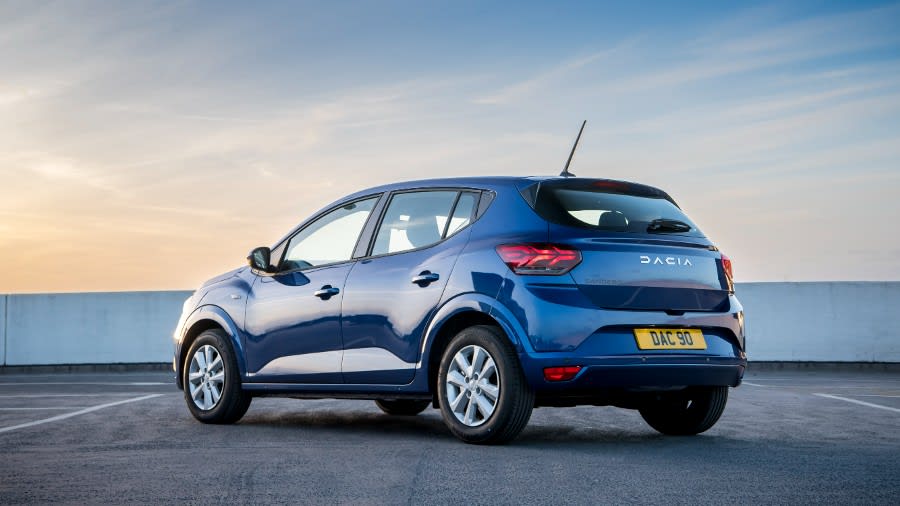
Rival Cars
There are many supermini rivals for the Sandero.
The most obvious are the Skoda Fabia, Kia Picanto, Ford Fiesta and Volkswagen Polo.
Of course, there's always the Renault Clio (below), which, as we said earlier, shares many of its underpinnings with the Sandero nowadays.
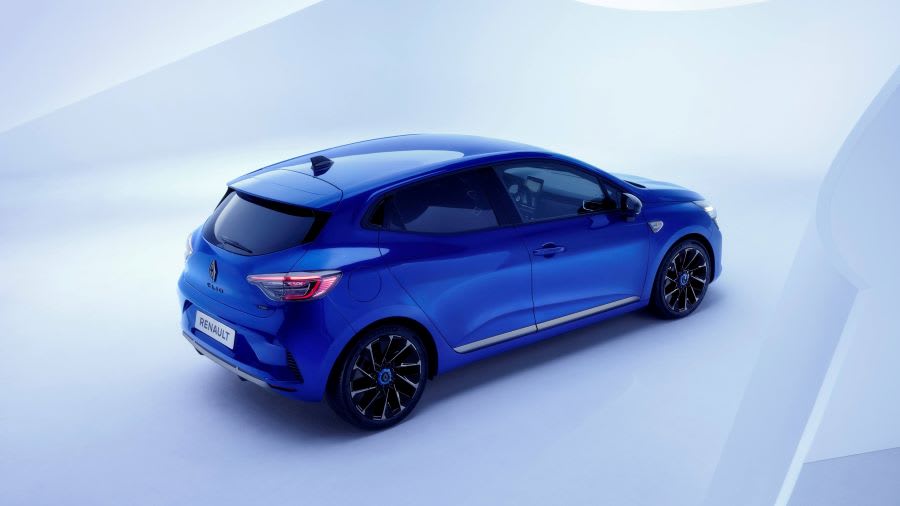
The Honda Jazz is also worth consideration.
All of them have their advantages over the Sandero (notably far better safety ratings), but all of them are considerably more expensive.
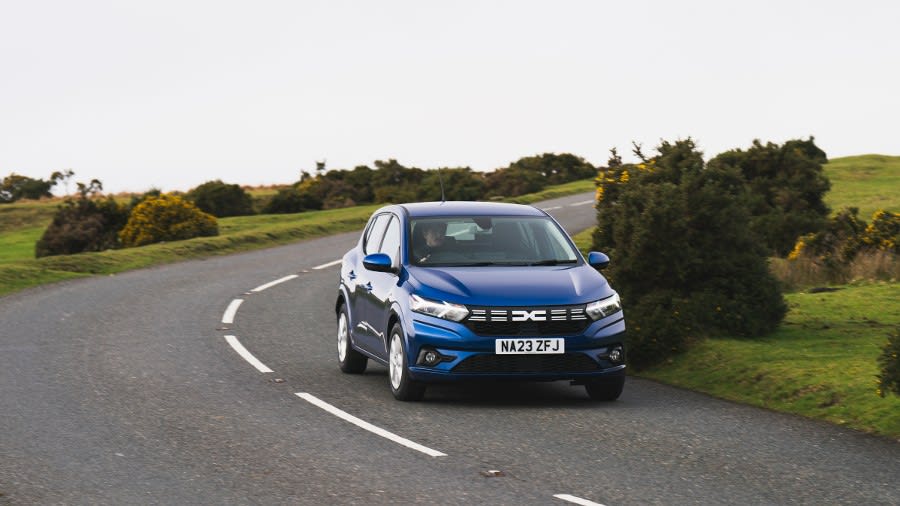
Verdict & Next Steps
The Dacia Sandero is a very impressive little car.
It is very cheap to lease, and it stretches a tiny budget to its limits, offering an impressive amount of equipment as standard, especially on the Expression model.
That’s the trim we’d go for, as it’s only a bit extra over the entry-level Essential trim.
We'd also recommend the TCe 100 Bi-Fuel if you can live with having to fill up an LPG tank at the petrol station forecourts now and again.
The safety rating is a concern. But if you're going to be doing mainly low-speed journeys around town or doing most of your driving at rush hour, this shouldn't be an issue.
Practicality-wise, the Sandero is excellent for a car of its size, and its ride comfort, though not the best in class, is impressive, too.
More expensive competitors have grander interiors, but it's not bad for the money.
To sum up, the Sandero is a car with plenty of frills at a no-frills cost – and it maximises what can be achieved for what is, by today's standards, a meagre leasing price.
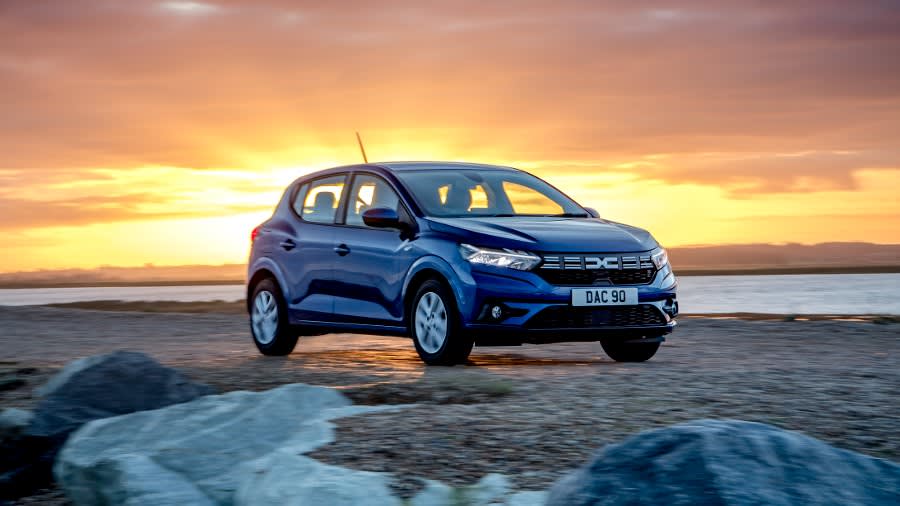
Where to next?
View latest Dacia Sandero lease deals - from just £190 per month ex VAT**.
Call us on 0118 3048 688 or hit the green 'Enquire' button for more details.
Looking for a great leasing deal? Check out our incredible range of Special Offers and Lease Deals.
New hatchback? Read our latest Reviews and find the right model for you.
Want to know more about leasing? Take a look at our comprehensive Leasing Guides.
Interested in everything motoring? Why not catch up on all the latest Car Leasing News.
**Score based on Select’s unique meta score analysis, taking into account the UK’s top leading independent car website reviews of the Dacia Sandero.
**Correct as of 08/04/2024. Based on 9 months initial payment, 5,000 miles annually, over a 48 month lease. Initial payment equivalent to 9 monthly payments, or £1,711.44 (Plus admin fee) Ts and Cs apply. Credit is subject to status.

.jpg)



















